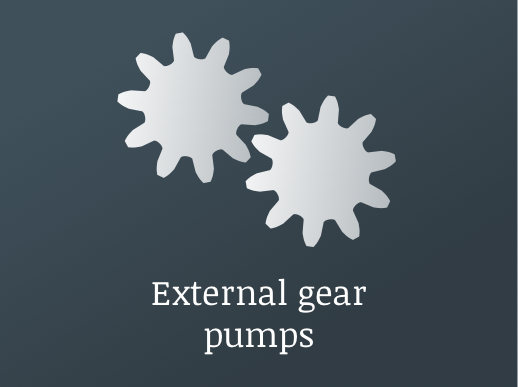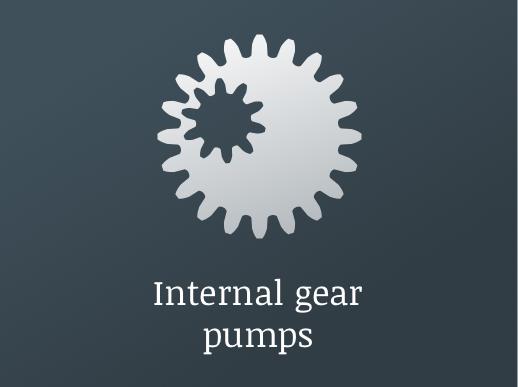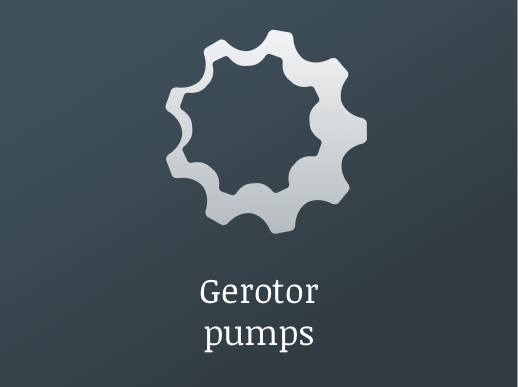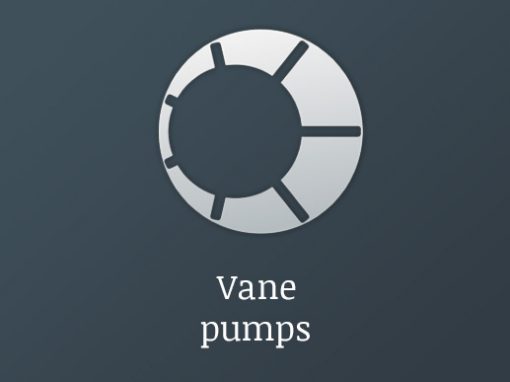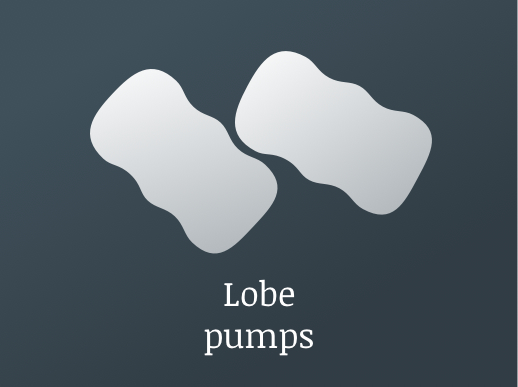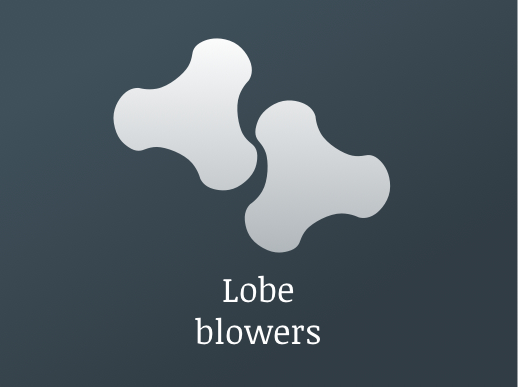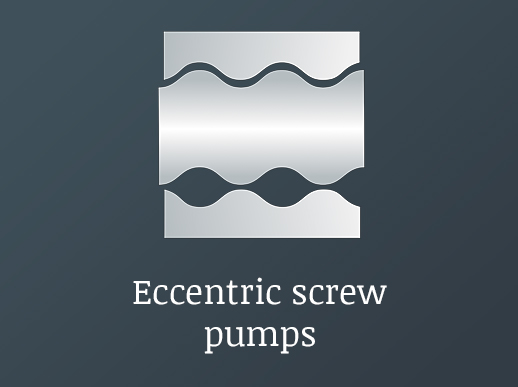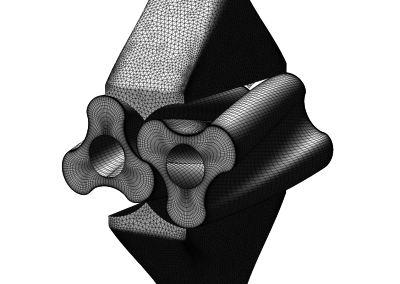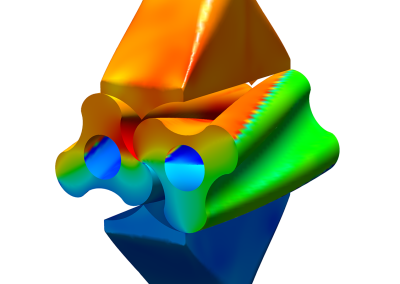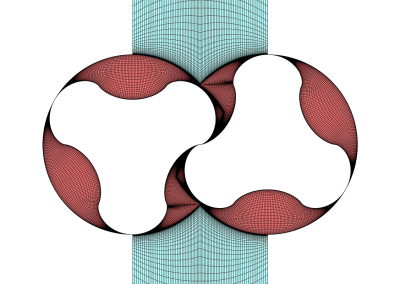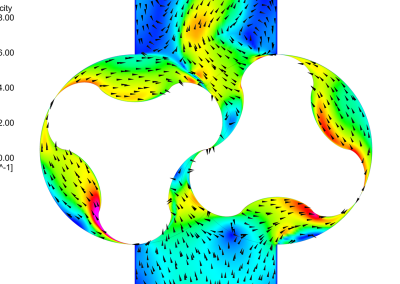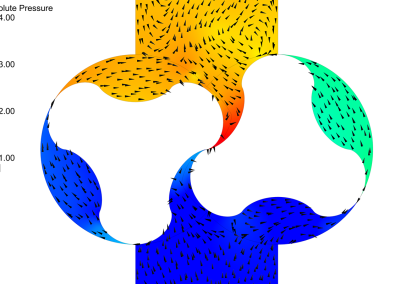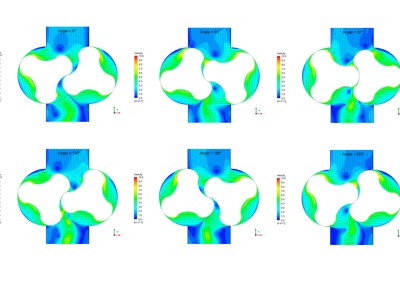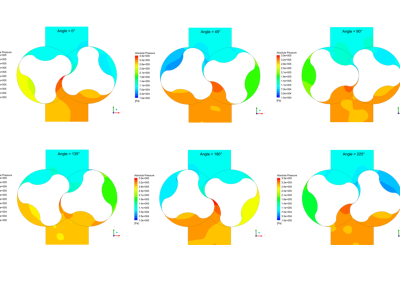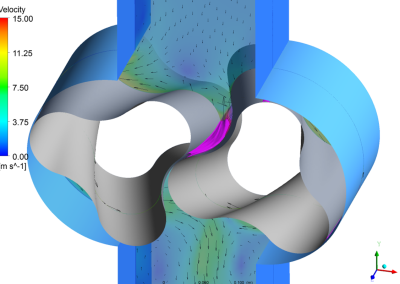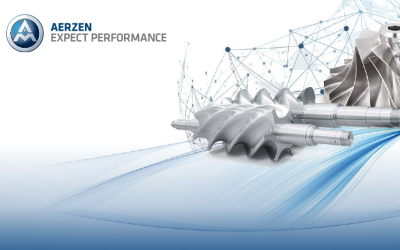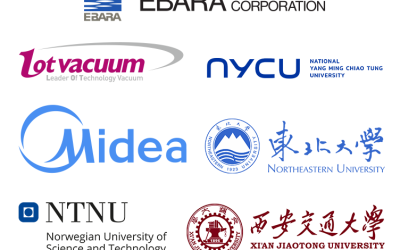TwinMesh for Reliable CFD Analysis of Rotary Lobe Pumps
Combining TwinMesh and CFD solvers offers engineers a unique, efficient and fast workflow for transient, three-dimensional computational fluid and thermal simulation (CFD) of rotary lobe pumps.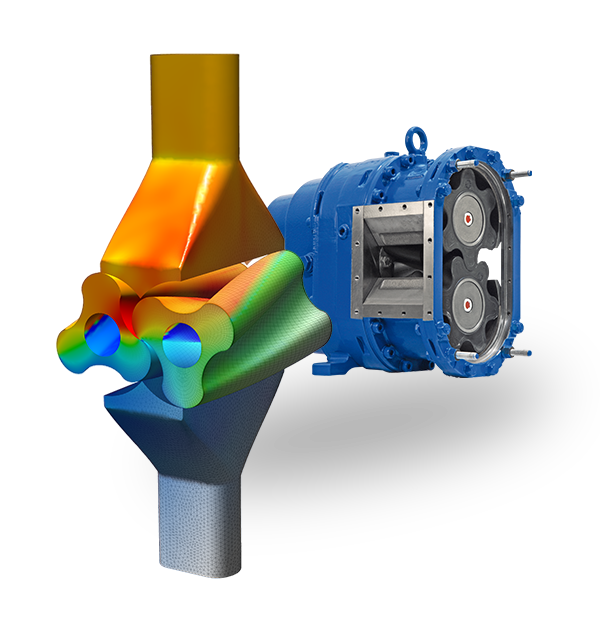
Design Engineers of Rotary Lobe Pumps Must:
- Have deep insights into the details of the machine behavior
- Analyse the impact of different operation requirements (e.g different fluid viscosities, pressure difference, speed, etc.)
- Be able to answer specific customer demands
- Produce fast and reliable answers
Thanks to our software TwinMesh real virtual product development is available for rotary lobe pumps! TwinMesh and leading CFD solvers together allow for efficient and reliable CFD analysis of rotary lobe pumps.
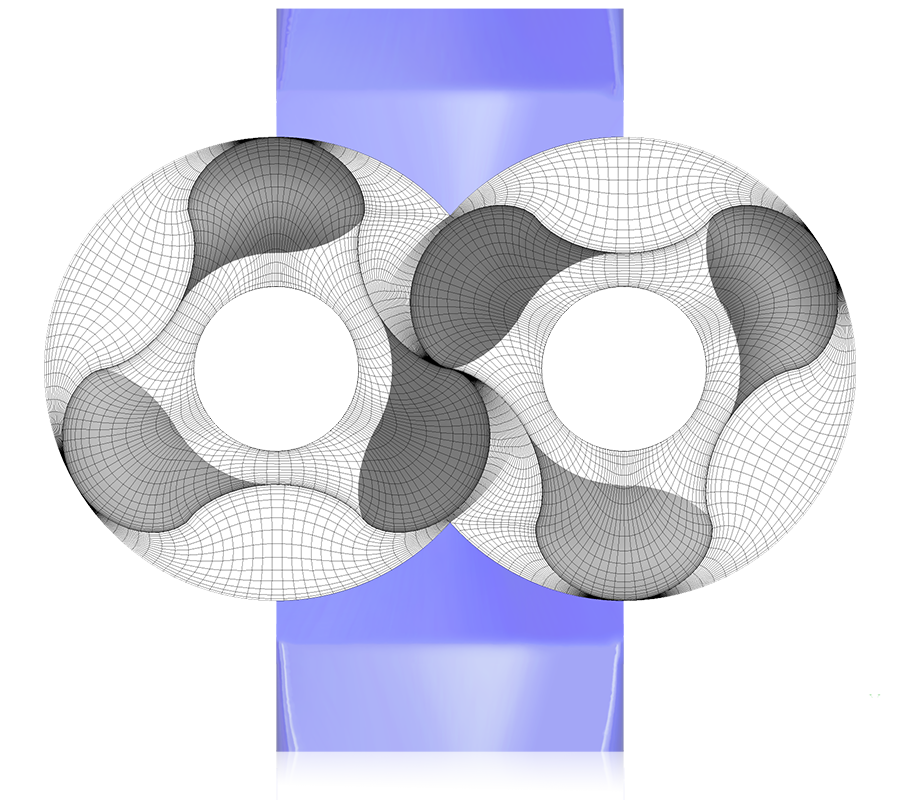
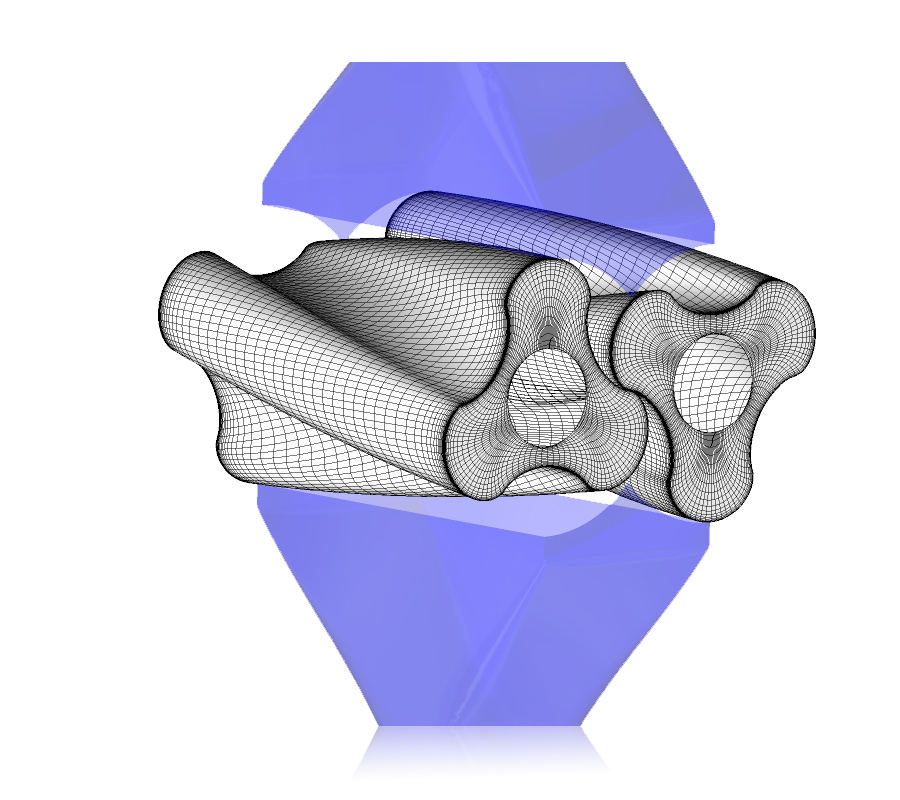
No More Numerical Limits
Common limitations of most CFD software packages such as
- limited physicical models or mesh motion features,
- insufficient mesh resolution or mesh topology
- numerical errors due to bad mesh quality while remeshing
- numerical errors due to frequent interpolation or
- numerical and physical limits due use of overlapping mesh method
are redundant for the TwinMesh approach. Using structured grids from the TwinMesh software users get access to the full capability of CFD modelling available in CFD software packages. The high quality meshes from TwinMesh result in reliable and stable CFD simulations of rotary lobe pumps at moderate model sizes and moderate calculation times for transient analysis.
Reliable CFD Analysis of Rotary Lobe Pumps:
CFD analysis results generated with TwinMesh and CFD software provide engineers of rotary lobe pumps with essential information such as:
- Velocity, pressure, and temperature fields within the working chambers and in axial and radial clearances
- Flow rates and mass flow at user defined operation points
- Torques, moments, forces and machine efficiency (CoP)
- Leakage and losses
- Pulsation behaviour of the machine
- Location and magnitude of erosion (e. g. particles, cavitation)
- Duration and magnitude of acoustic sources (emission)
TwinMesh and leading CFD solvers together make a reliable, modern, and state-of-the-art engineering tool, which allows for fast, reliable and efficient analysis and optimisation of lobe pumps.
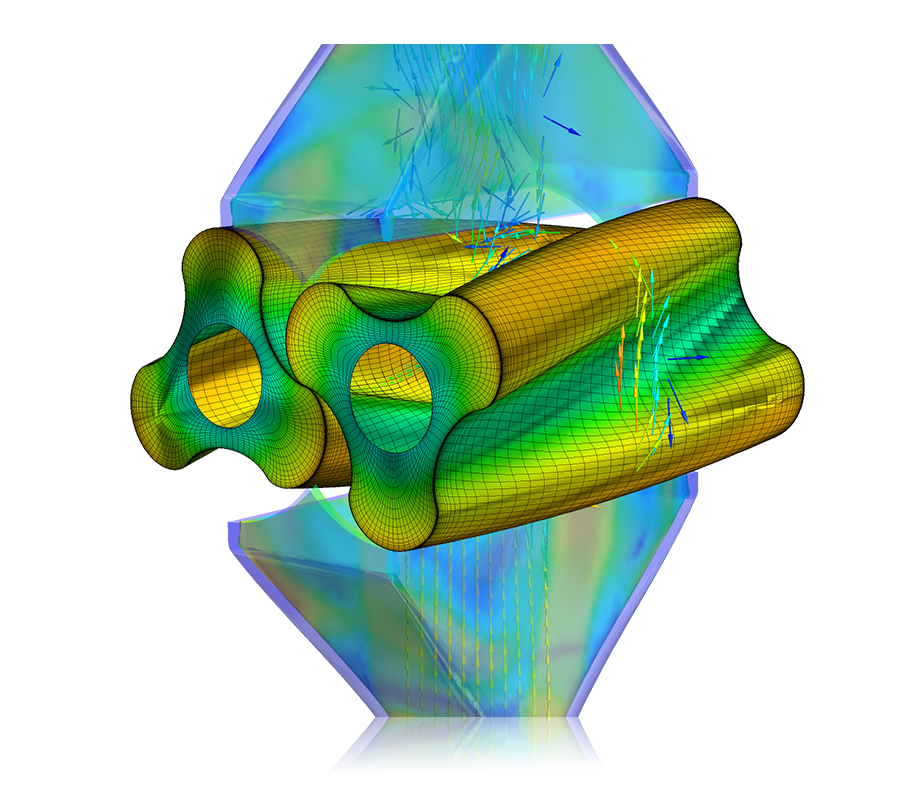
Better Designs
Increase machine performance, efficiency, and durability by a better understanding of complex phenomena inside your machine.
Speed & Flexibility
Reduce your time-to-market and fasten your response time to changing demands significantly by massive use of virtual prototyping.
Drive Innovation
Drive real innovation by getting deeper insight into the details of your products and their interaction with connected systems.
Reduced Costs
Reduce development and manufacturing costs by massive use of virtual product development instead of time consuming measurements on physical prototypes.
CFD Results of Rotary Lobe Pumps Simulations
Animations of Rotary Lobe Pump Simulations
Comparison of Lobe Pumps with two, three and four lobes
Velocity in Rotary Lobe Pump / Circumferential Piston Pump with two lobes
Related blog entries
The TwinMesh 2024 Release is here! Find out what’s new!
The new release of TwinMesh 2024 is available and allows the CFD simulation of more complex applications.
Screw compressors for green hydrogen at Aerzen: Demands and challenges
While development and simulation of screw compressors for heavy gases as air or refrigerants are quite usual, those for light gases, here especially hydrogen as future carrier of green energy, make high demands on internal clearance sizes, rotor profiles, and operating conditions to ensure high efficiency.
Great success stories from our rapidly growing TwinMesh customer base
The TwinMesh™ user group grows and grows and grows! We are thrilled to follow and support our customers on their way to improve and optimize their machines reaching the next level in design and performance.
TwinMesh is available for these PD Machines
